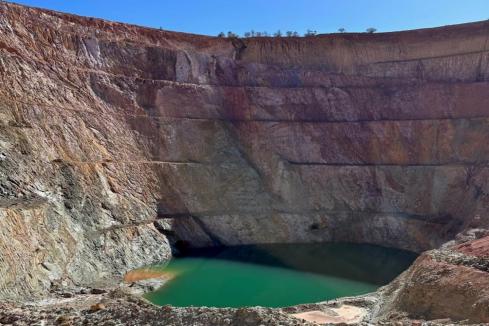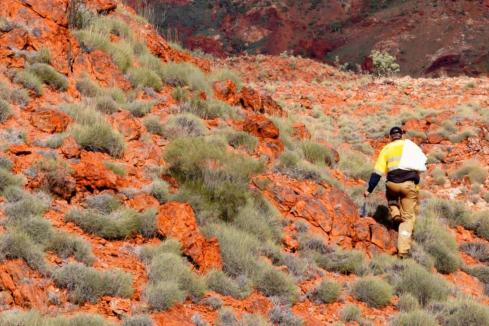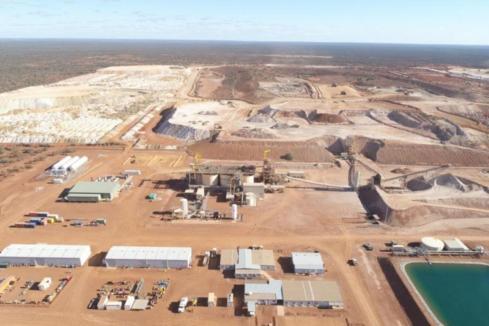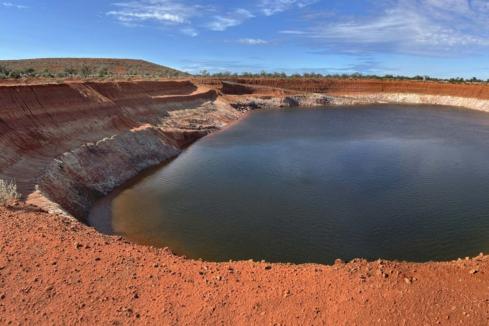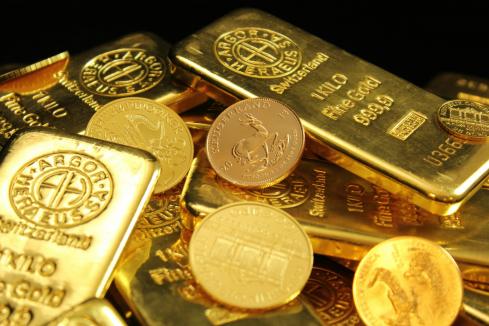Javelin Minerals has picked up the historic Eureka open pit north of Kalgoorlie where it is seeking to prove up a theory that more golden riches may be lurking nearby. The move follows the spectacular success of Spectrum Metals and Spartan Resources. Both found multi-million dollar gold deposits about 300m north of their mothballed open pits and Javelin already has some intriguing drill holes about 300m north of Eureka suggesting there is more gold out there.

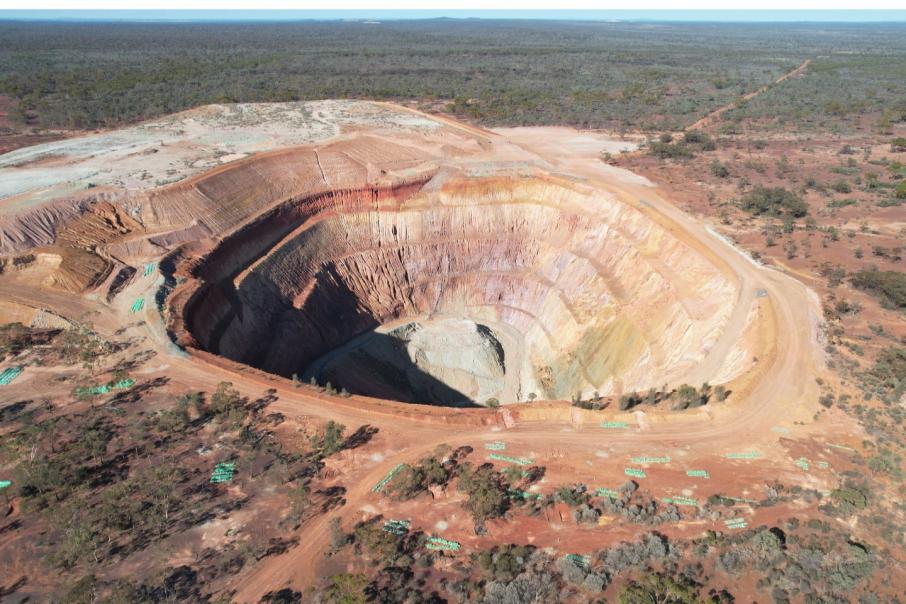
Javelin Minerals has picked up the historic Eureka open pit north of Kalgoorlie from Delta Lithium where it is seeking to prove up a theory that more golden riches may be lurking nearby. The move follows the spectacular success of Spectrum Metals and Spartan Resources. Both found multi-million dollar gold deposits about 300m north of their mothballed open pits and Javelin already has some intriguing drill holes about 300m north of Eureka suggesting there is more gold out there.
Perth broker Shaw and Partners already has firm commitments for $3m at $.0025 a share (including a 1 for 2 option exercisable at $.004 within 2 years) to fund the deal. Under the terms of the sale Delta will pick up $1.5m in cash and a further $1.5m in Javelin shares at A$0.003 per share.
If Javelin manages to get Eureka back into production or increase the inferred resource to 200,000 ounces of gold Delta will pick up another $1m in Javelin shares. Notably, Eureka already comes gift-wrapped with a 112,000 ounce 1.42 gram per tonne starter resource.
The initial shares issued to Delta Lithium will be subject to escrow for 12 months.
The old Eureka open pit sits about 50km north-west of Kalgoorlie in the prospective sequence of mafic and ultramafic rocks which forms part of the more than 290km-long Kalgoorlie-Menzies leg of the 700km-long Norseman to Wiluna Greenstone belt.
Importantly it is only 20kms north-west of the Paddington gold mine that has been mined for years and is well known for doing toll treating deals.
Paddington has turned out more than four million ounces during its production history from the same prospective rock sequence as mapped at Eureka, which is also held to be a structural setting similar to the half-million ounce Zoroastrian gold deposit at Bardoc Gold, only 1.4km east of the Eureka deposit.
The Eureka mine site was mined for the most part in the early 1990s and was subject to small scale tribute mining again in 2018 by Kalgoorlie identity Graham McGarry who pulled a bit over 5000 ounces from the old pit at 3.16 g/t gold. However, Javelin says prior drilling was poorly targeted at the project and was not deep enough to follow the interpreted structures properly.
Javelin has a theory that the old-timers were too focussed on the existing pit and given the ordinary gold prices at the time, were not motivated to spend too much money exploring the areas around it.

Caption - Spectrum Metals sold out to Ramelius Resources for $230m after discovering over 300,000 ounces of gold going 16 g/t gold just 300m north of its historic mothballed Penny West open pit.
Spectrum Metals and Spartan Resources both spectacularly proved this was a mistake at their respective projects. Spectrum stumbled across the Penny North gold deposit just 300m north of its old mined out Penny West open pit in WA and subsequently sold the whole company to Ramelius Resources for $230m (which increased dramatically on settlement day as the deal involved Ramelius shares that ran hard between the announcement of the deal and the settlement of the deal). The maiden resource at Penny North was just over 300,000 ounces going a whopping 16.8 g/t gold.
More recently Spartan employed the same near mine theory when it stubbed its toe on the 1.5m ounce Never Never discovery lurking just 300m north of its mothballed Gilbey’s open pit in WA’s Murchison.

Caption - Javelin is seeking to replicate the success of Spartan Resources which unearthed 1.5m ounces of gold at its Never Never discovery just 300m north of its mothballed Gilbey’s open pit in WA’s Murchison region.
Ominously, the Eureka project already has sniffs of gold 300m north of the old Eureka pit too – some of which are in ounce to the tonne dirt like a 4m intercept going 32.6 g/t gold from 104m. Another previous 1m hit came in at an impressive 14.72 g/t gold and notably, was from surface, demonstrating the potential range of mineralisation.
About 600m north of the old pit, Javelin has even more impressive numbers to follow up on like 4m at 135 g/t gold from 53m and 4m grading 11 g/t gold from 42m.
In fact, the entire area is littered with old drill numbers that are begging to see the drill bit again. For example, directly under the old pit a 23m hit going 3.32 g/t gold from 112m and another 5m hit further up from 33m going an impressive 25.6 g/t gold both need more attention.
There are even hints of mineralisation about 300m to the south of Eureka which include 13m at 2.22 g/t gold from 51m and 6m at 13.88 g/t gold from 38m.
Whilst some of the drill intersections that require follow up may seem remarkable in grade, they are perhaps not all that remarkable when considering the project was first mined from 1897 up to 1940 for a total 809 tonnes averaging a crazy 27.8 g/t gold – no doubt Javelin will be counting on some of that dirt being left behind by the old-timers.
Notably, Eureka is not Javelin’s first rodeo and is an extension of the same near mine exploration theory it is employing at its Coogee gold project at the north end of Lake Lefroy, just east of Kambalda and about 55 km south-east of Kalgoorlie.
The Coogee gold deposit was discovered in the mid-1990s by Sovereign Resources next to Gold Fields’ world-class St Ives gold mining complex.
Javelin acquired 100 per cent of the Coogee project in 2020 from Ramelius Resources and Serena Minerals for equity and both companies are now major shareholders.
Ramelius mined the Coogee open pit for gold to 70m depth until 2013, producing 20,400 ounces at a respectable average head grade of 4.7g/t gold. Ramelius subsequently became a major shareholder in Javelin.
The Coogee mining lease has been a key focus for Javelin’s since acquisition. The Coogee open pit and its immediate surrounds have not been subject to any systematic exploration drilling since Ramelius ended mining at the site.
When Javelin acquired the project, it contained an estimated 10,600 ounce gold resource at 3.4g/t gold which, after a 12-month drilling program, then jumped to 49,000 ounces at 1.07g/t gold in 2022.
In August, Javelin announced the Coogee gold project hosts a recently upgraded JORC 2012 compliant mineral resource amounting to 3.65 million tonnes at 1.08g/t gold for 126,685 ounces of gold and 1.01 million tonnes at 0.41 per cent copper for 4133t tonnes of the red metal in a separate inferred “copper domain”, north of the old pit.
Once again, modelling shows gold mineralisation extending north along strike for 1.2km at an average width of 350m and to more than 225m vertically under the old Coogee open pit and still open to the north and down-dip.
Javelin upped its drilling metreage for the greater Coogee area from 2500m to 3000m for a planned reverse-circulation and diamond drilling program set to be launched in mid-November.
The decision came after the company identified several opportunities to extend known mineralisation below the old open pit and in extensions towards Coogee North and beyond to a pronounced magnetic high feature.
The proposed drilling was prompted by results from Javelin’s extensive reviews of reprocessed geophysical and other data which had lifted Coogee’s resource estimate to the current inventory figure of 126,685 ounces of gold.
Javelin’s recent full data review and new magnetics reinterpretations and modelling have identified eight new tantalising geophysical targets.
It will now direct its focus toward testing five of the nearest priority walk-up targets at the Coogee mine - and also north and west of the old mine - including a prominent and curious looking ovoid magnetic anomaly in the south-east of its exploration licence, adjacent to the mining lease.
Review work has also identified a new 3km-long potential gold trend west of and parallel to the Coogee pit structure and Javelin believes there is the potential there for a “big gold-copper system” that could lie at depth to the north-west.
Javelin says previous drillholes at Coogee North were also not deep enough to test the nearby screaming magnetic anomaly which could represent a potential repetition of the historic Coogee lode and the company has earmarked ten drillholes for 1650m to test it.
Significantly, once Javelin dials in the current Eureka gold mine resource and adds on its Coogee resource it will now have a total resource endowment of 238,700 ounces of gold in two of the best mining addresses in Australia.
It is probably fair to say that Javelin has been in something of a slumber for a couple of years however since falling under the control of Executive Chairman and well known West Perth corporate finance player Brett Mitchell back in February, it has forged a new way forward and eked out a solid “near mine exploration strategy.”
Half of that strategy came from a strategic review of Coogee instigated by Mitchell that ended in some screaming near mine targets that look like they are begging to be drilled. Eureka now gives Javelin a quinella of projects that almost look exactly the same that will likely both benefit from exactly the same brownfields near mine exploration strategy.
And who knows, maybe Javelin will complete the trifecta of companies that have successfully employed this “old riches left behind” strategy if it can emulate the success of both Spartan and Spectrum.
Is your ASX-listed company doing something interesting? Contact: matt.birney@businessnews.com.au






